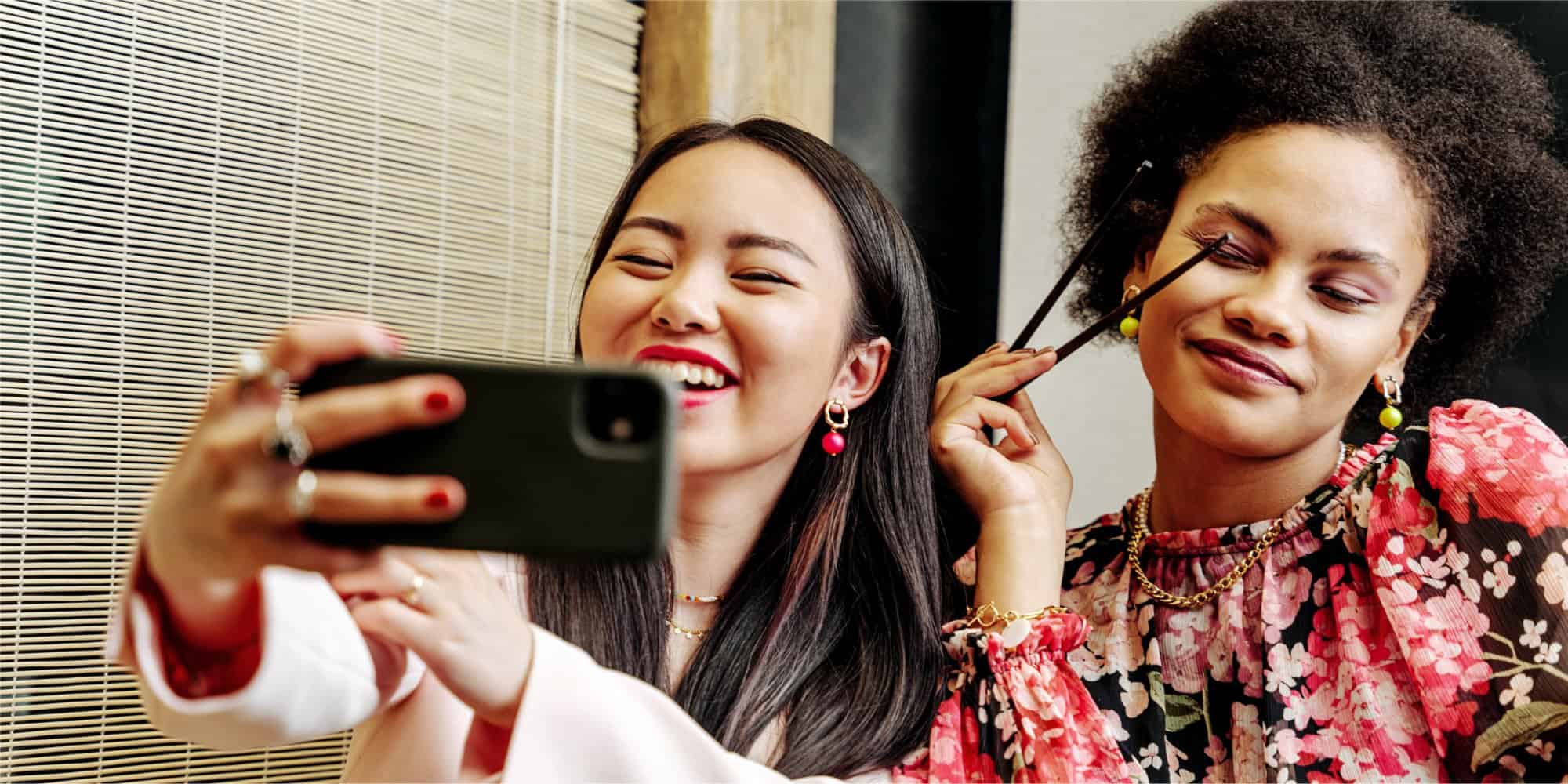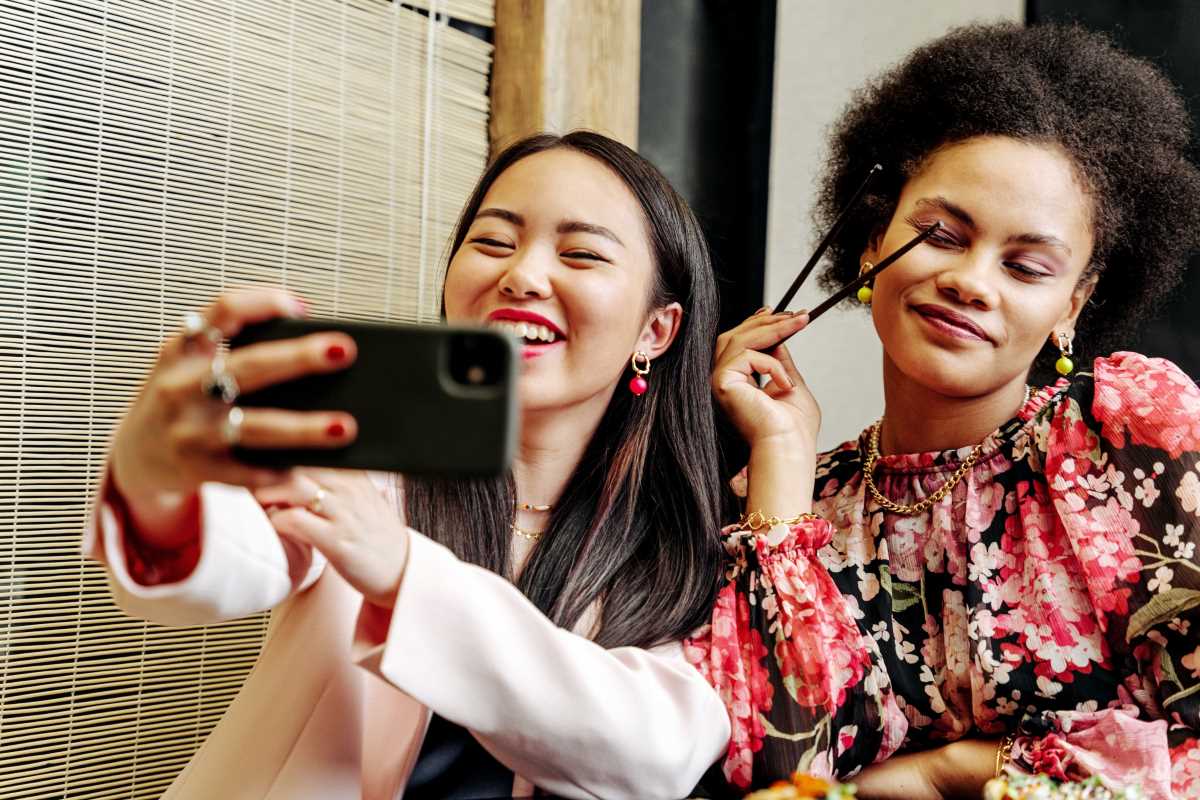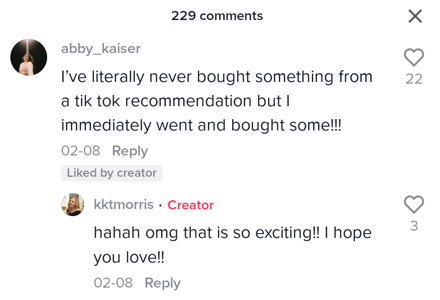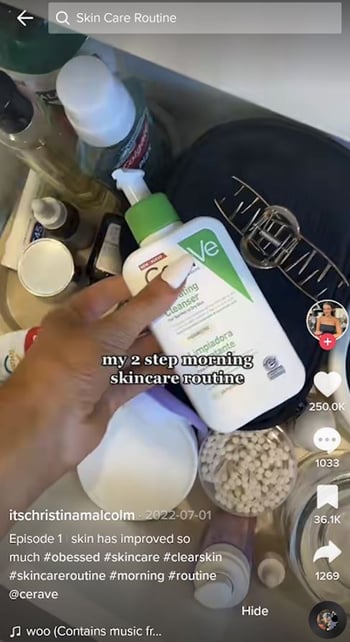18 Examples of Beauty Brands That Nail Influencer Marketing
Influencer marketing for beauty brands is bigger than ever. These 18 beauty influencer marketing examples highlight how investing in influencers is...
Knowing how many influencers to partner with can be tricky. Below we break down how to decide on a number of creators that makes sense for your brand.


“Okay, so how many influencers do we need?”
This question pops up all the time when we talk to brands.
Thing is, there is no magic number when it comes to how many influencers you should hire.
There are way too many variables to consider. Your industry, goals, growth stage —the list goes on.
Besides, one of the biggest benefits of influencer marketing is the freedom to scale at your own pace.
(But if you have the bandwidth to hire hundreds of creators vs. a handful, we recommend the latter!)
While there is no one-size-fits-all answer number to stick to, we won’t leave you hanging! This post will help you decide how many influencers make sense for your business.
Skip to Section 👇Macro-Influencers vs. Micro-Influencers |
How many influencers you hire isn’t the only number to consider when kicking off a creator campaign.
Audience size matters, too. Earning more posts means working primarily with micro and power-middle influencers versus celebs. Doing so will extend your budget, too.
You don’t have to choose between quality and quantity — micro-influencers offer the best of both worlds.
How so? For starters, influencers with less than 5,000 followers earn the most reach and engagement relative to their follower count. This is true on both Instagram and TikTok.
Smaller creators drive high engagement because they're smaller. Their audiences see them as peers offering recommendations versus celebrities making endorsements. This results in meaningful engagement and a much-needed sense of trust.
Skilled micro-influencers know how to seamlessly promote products while keeping followers engaged.

Source: @kktmorris
Consider also that you’re gambling with algorithms when hiring macro-influencers. Imagine putting the bulk of your influencer campaign budget into a couple of celebrity posts that get buried by the algorithm. Bummer! That said, it totally happens.
This phenomenon is well-documented as big accounts are fighting low engagement on Instagram.
TikTok explicitly says that follower count is not a determining factor for creators to go viral. That’s why it’s so common to see micro-influencers hyping their favorite brands on the “For You” page.
Hiring a high volume of smaller influencers means you’re not putting all of your eggs in one basket. In fact, you’re casting a wider net and creating more opportunities to earn engagement.
We’ll bite: it’s easy for us to tell brands “the more, the merrier” when it comes to hiring influencers.
The reality, though? We find that the brands seeing a real ROI from influencer marketing aren’t thinking small. Below we outline the reasons why hiring a high volume of creators is a smart move.
Food for thought: brands that stand out on social media today aren’t doing it alone.
Research from Nielsen highlights how building awareness remains the top priority of brands. The same report also notes that earning reach is getting tougher.
Because crowded competition and ever-changing algorithms aren’t doing brands any favors.
This cements the value of having hundreds of smaller creators shouting you out. Consistent interactions, @tags and posts can help you feed the social algorithms. Not to mention get more eyes on your account.
On that note, creator content can boost your brand’s visibility in social search. This is crucial on TikTok where consumers are eager to discover new products.
For example, brands like Cerave dominate TikTok’s social search results via creator content. The video below earned a staggering 4 million views from a creator with ~20k followers.

Source: @itschristinamalcolm
That’s just from one video, by the way! Search “skincare routine” (17+ billion views) on TikTok and you’ll see no shortage of Cerave’s brand partners. This illustrates the potential results of hiring creators at scale.
Pop quiz: would you rather have 10 posts or 100 posts from creators promoting your products?
No surprises here! The more people post about your brand, the more pieces of content to your name.
Earning more user-generated content is one of the top goals of creator campaigns for a reason. The value of influencer-generated content goes beyond awareness. Boosting your volume of creator posts also…
For example, Suja Juice’s branded hashtag on Instagram has earned over 20k posts. This includes pieces of content from brand partners, influencers and everyday customers alike.

Many of these posts serve as brilliant billboards for the brand. Earning creator and influencer-generated content long-term means you always have authentic pieces of content to promote.
Brands should strive to squeeze as much as they can from any given marketing campaign.
Well, influencer campaigns are no exception.
Piggybacking on the point above, extending the duration of your campaign sets you up for better results long-term. Again, partnering with more influencers means you’ll earn more content.
Think of it as a snowball effect. Creators often gravitate towards products earning buzz. The more creators post about your product, the likelier you are to bring in new creators to shout you out as well.
We’ve also found that campaigns can take anywhere between six months to a year to reach their peak momentum. This was the case for the 10-month campaign we ran with Curlsmith earning 6,300+ pieces of creator content. These results are possible with always-on campaigns versus one-off celebrity posts.
Let’s say you’re ready to kick off your next influencer campaign but have no idea of how many creators to hire. Again, there’s no one-size-fits-all number.
Here are some steps to help you hone in on a volume of creators that aligns with your goals.
Speaking of goals, we find that most brands want to 1) earn UGC and 2) boost brand awareness.
These are both great outcomes to shoot for. That said, they involve slightly different requirements in terms of how many creators you need.
UGC is a popular campaign goal for multiple reasons. Brands can use UGC to supplement their social media content, improve conversions on their product pages, white label as ads and more.
How you hope to use the UGC you collect will be a determining factor in the number of creators you should reach out to. Our rule of thumb is to double your target creator count as a lot of dropoffs happen during outreach.
Let’s run through a scenario.
Say you want to increase your brand’s social media posting frequency by repurposing three pieces of UGC a week to repost on your brand accounts. That amounts to a total of twelve pieces of creator UGC per month.
In order to hit that number and get the quality of posts that you need (think: not only is it a quality creator post, it also hits your brand voice and fits well on your grid), you should also aim to collect a total of 25 posts.
If you’re handling the process in-house you should plan to reach out to at least 50 creators to hit that post minimum. This outreach buffer will account for common campaign snags (like influencer drop-off and pitch rejections).
Brand awareness is typically measured by name recognition and product familiarity at a mass scale.
Because brand awareness requires reaching thousands, or even millions, of people (not just once, but multiple times), we recommend working with as many creators as you can.
The level of brand awareness you are able to achieve through creator collaborations will largely depend on your marketing budget and where your brand awareness is currently. This means that the number of creators a brand should work with will vary from brand to brand.
But since we hate unanswered questions, we’ll say this:
When building brand awareness, especially on TikTok and Reels, it’s a numbers game. To see any kind of brand awareness start to build, getting 50 micro-influencer posts minimum per month is where we see things start to take off.
When you're talking about brand awareness though, more is always better.
A high volume of creators can earn a meaningful share of voice versus your competitors. Your goal should be to start popping up left and right in the feeds of your target audience.
The best results we’ve seen have been the ones where brands were working with hundreds of creators per month. That’s when people will start to hear about your brand so often on social media that they can't go anywhere without hearing your name come up.
Of course, these are just some of the goals brands may be striving to achieve. The number of creators you work with to support a retail partnership or grow your reviews and social proof will look different brand by brand as well.
Note: If you want a more personalized creator recommendation experience (we get asked about this a lot), you can schedule a chat with us and see how our platform can help.
Your industry and audience are central to figuring out how many influencers you need.
For example, the skincare space is fiercely competitive. It’s common for beauty brands to start campaigns with hundreds of creators. You’ll need a big number to break through the noise.
Compare this to niche CPG brands where starting with a few dozen creators might make more sense.
Again, you can always scale up as you get a feel for the landscape.
After brands ask “how many,” the next question is often about how long to run a campaign.
Makes sense, though: both “how many” and “how long” go hand in hand. The longer your campaigns, the more likely you are to earn more posts and attract more influencers.
As noted earlier, long-term and always-on influencer campaigns produce the best results. Brands should view creators as an ongoing commitment versus a short-term, one-off tactic.
Consider what you can achieve in months or years rather than days or weeks. Earning thousands of posts doesn’t happen overnight. Remember: it pays to be patient.
Good question! We often talk to brands running DIY creator campaigns that suspect they’re ready to scale. If so, we recommend putting your funnel and campaigns under that microscope. For starters:
Based on the factors above, you can assess what is and isn’t working. If you’re pleased with your influencer content but not what happens on-site, you may need to fine-tune your funnel. If you’re happy with your results, you can scale your creator campaigns to keep building your momentum.
Note: if sales were your end goal, don’t call it quits just yet. Tracking influencer sales is infamously tricky. Not to mention that sales are typically the last byproduct of any given campaign. We recommend reporting on more tangible metrics and taking action to create an environment where sales happen seamlessly.
We get it: the question of how many influencers to use for a marketing campaign is complicated.
The takeaway from all of the above? Hiring a high volume of influencers will yield the best results for most brands. Of course, the catch to working with this many creators is the legwork involved.
There are countless creators out there for any given brand, sure.
But you still have to craft pitches, conduct outreach and negotiate. To say that it’s a lot to juggle would be an understatement. You probably know this all to well and so do we.
That's exactly why we created Statusphere.
Our micro-influencer marketing platform is built specifically for consumer brands that want to earn authentic content at scale. Our vetted community of creators, advanced matchmaking algorithm help fulfillment technology make it happen.
Statusphere's software eliminates all of the most tedious and time-consuming tasks related to running influencer campaigns.
For example, our algorithm matches brands and creators using 250+ first-party data points to ensure a perfect fit. Also, all of your campaign data and content are secured in one place.

Want to learn more about our platform works? Get in touch with one of our experts to see how we can scale your influencer marketing efforts in a fraction of the time it takes in-house.
This article was first published in March 2023. It was last updated June 13, 2023.
Influencer marketing for beauty brands is bigger than ever. These 18 beauty influencer marketing examples highlight how investing in influencers is...
Despite popular belief, brands shouldn’t sweat their social media follower count. Below we explain why (and what metrics to focus on instead).
The numbers don’t lie when it comes to how well influencer marketing works in 2024. Below we share 17 eye-opening influencer effectiveness statistics...
Be the first to know about the latest tools, trends and strategies in influencer marketing for brands.